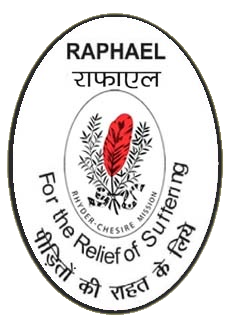Disaster Inclusion Disability Risk Reduction Mock Drill at Raphael
March 23, 2021
Disability Inclusive Disaster Risk Reduction, commonly known as the DIDRR, is a community that strives to reduce the impact of disasters on affected communities by mitigating and reducing risks. The team, consisting of members of the Samvedna Project, Landour Community Hospital, Mussoorie (A Unit of Emmanuel Hospital Association) and 2 members of the government disaster management programme, conducted a two-day mock drill on disaster management at Raphael Centre on 9th and 10th March 21. The team has been creating awareness on disaster management since 2013.

On the first day the team surveyed the campus to assess and identify areas where early warning systems in case of disaster should be installed. This was followed by an awareness session for the entire staff and students of Raphael. The practical sessions included the following:
- How to call 108 Emergency Service correctly and what to do when waiting for the 108 to arrive, for example, examining the injured person’s pulse, breathing and injured area.
- Stretcher making with available materials such as bamboos, blanket, jacket or any cloth. If nothing is available, then lifting the injured person by making 4- hand or 3 – hand seats.
- How to give Cardiopulmonary resuscitation (CPR)in case of a heart attack
- The Heimlich manoeuvre to help expel something trapped in a person’s airway was demonstrated.
- When entering a room to rescue someone trapped in a fire, the best way is to crawl in to avoid excessive smoke getting in to the rescuer’s eyes and throat.
On the second day the team conducted a mock ‘Search and Rescue ‘ operation in case of dire circumstances. Understanding and learning First Aid is of utmost importance and is the first action to be taken in an accident. This includes learning how to apply pressure to a wound and dress it; contact emergency services immediately, create a stretcher or make ‘hand seats.
In case of a fracture, a wooden board should be used to keep the injured limb intact and in place. If a person falls unconscious, check for a pulse behind the neck or on the wrist. If a pulse is detected, his/her body should be massaged lightly from head to toe and his/her expressions must be kept carefully watched for signs of pain. If a person loses an eye during an accident, wring a a wet cloth, put it in a disposable cup and the cup should be held to the eye socket. Then tie a cloth around the eyes. If the intestines of a person fall out, the injured area must be covered with a wet cloth.
As far as possible gloves must be worn especially if there is blood on the victim.
Raphael staff and students participated in a Search & Rescue mock drill and we understood the importance of Hazard Mapping in every building. Every department marked dangerous equipment in the building and also identified safe houses on the premises. A hazard map was made for each building and presented to the group. This information will be used to remove as many hazards as possible. Every department must have a pre-prepared safety kit and every building must have a map of its entrances, doorways and exits.

While the river crossing activity was fun, it demonstrated how to hold on to a rope if needed to be taken across a river. The DIDDR team explained the different types of ropes and knots that can be used.
Post a Search & Rescue operation, the following measures are to be taken:
- Do a headcount where possible;
- Injured and unconscious people must be attended to and given medical aid immediately;
- Do not leave the person unattended;
- When contacting 108, the caller must mention your name, district, city, place of the accident and a landmark near it.
The team also threw light upon the team of counsellors who counsel families of the deceased or the injured after a mishap, to help them deal with post-traumatic stress.
It was a very productive session overall. We all came to know about safety measures in times of disasters and how to go about them. It is a moral duty of every human to save or help a person in need and the team provided us with very useful information to do just that.

RECENT POSTS

CONTACT
RAPHAEL CENTRE
End Mohini Road, Trans Rispana Nadi, Dehradun, 248001. Uttarakhand, India.
RAPHAEL IS A REGISTERED SOCIETY UNDER THE SOCIETY REGISTRATION ACT XXI OF 1860










